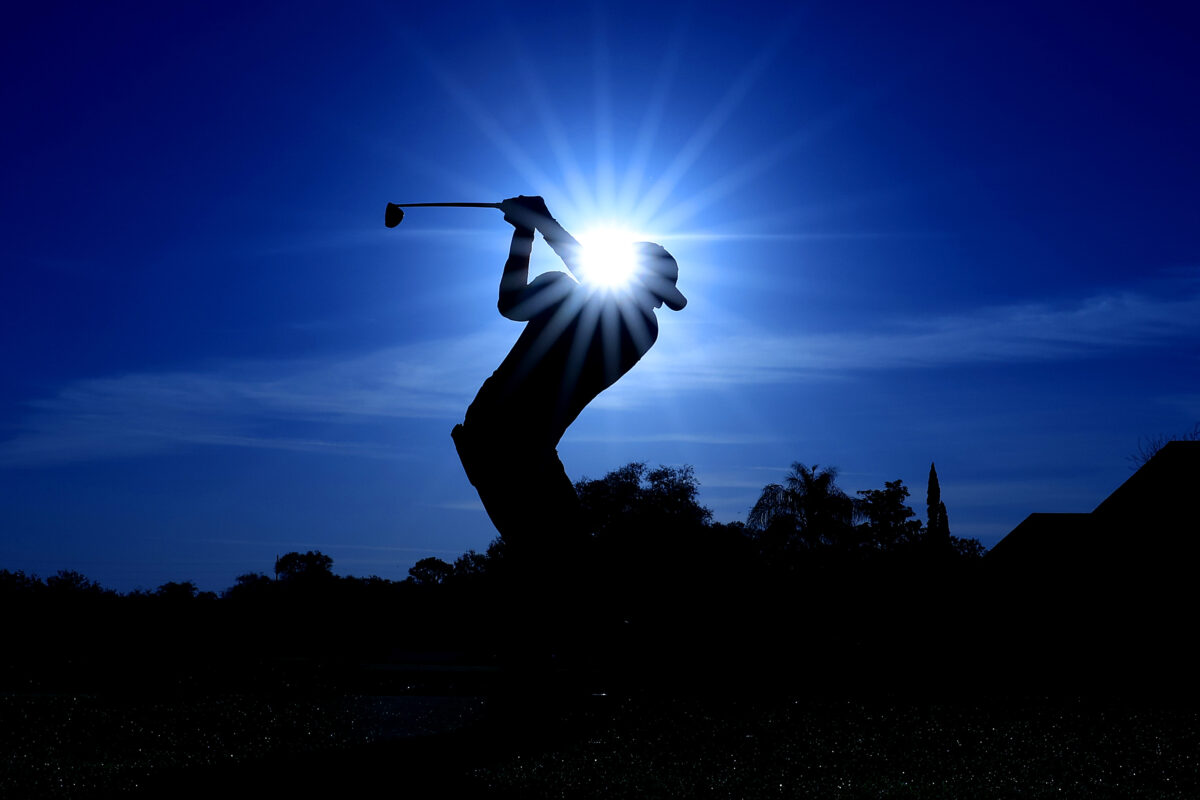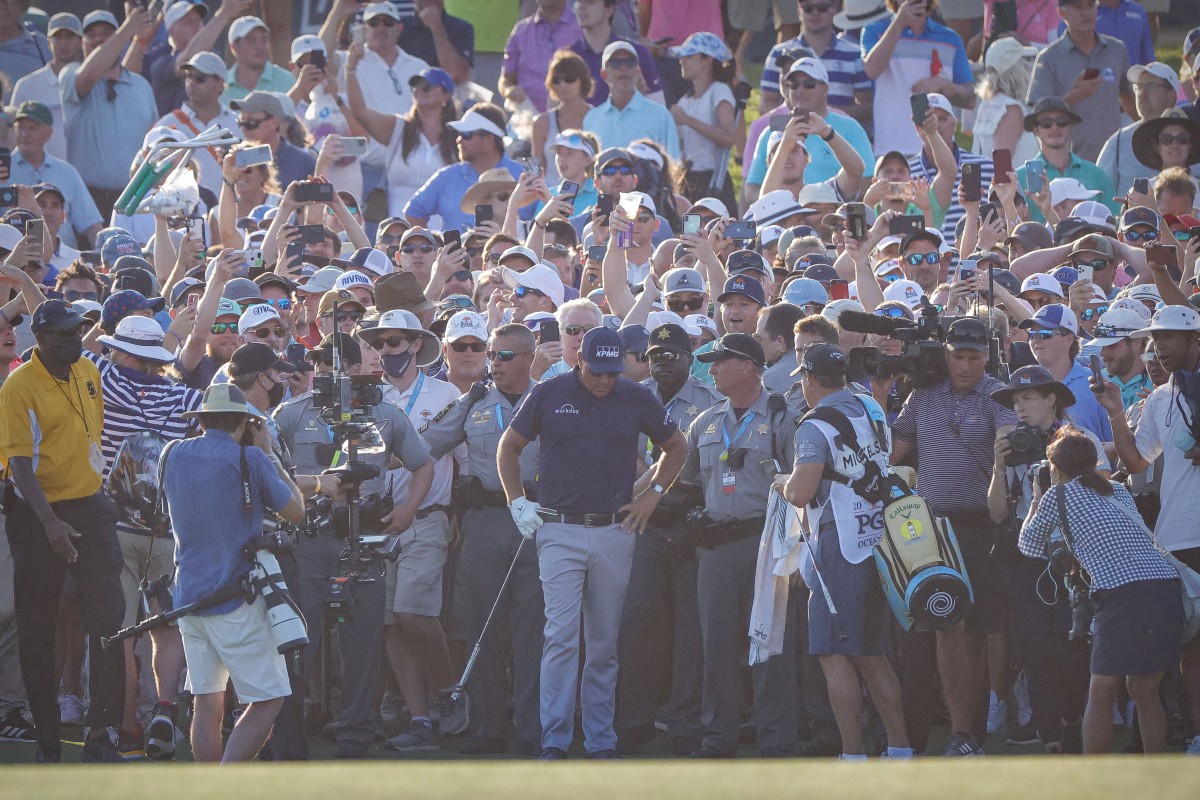In their more reflective moments, it must rankle the triumvirate of Messrs. Waugh, Whan and Slumbers that the most compelling drama in golf over the coming months is likely to occur outside the ropes of their respective major championships. The 58 days between Tuesday at Southern Hills and Thursday at St. Andrews will be contentious and do much to shape the sport’s future landscape, and will leave many industry executives yearning for the halcyon days of Shell’s Wonderful World of Golf, when the influence of oil money in the game was considerably less toxic.
Seth Waugh’s PGA Championship is already being impacted. Phil Mickelson registered for the tournament but his agent said no conclusion about his schedule should be drawn from that, or his simultaneous request for permission from the PGA Tour to play a Saudi-funded event in the U.K. on June 9-11 (grimly meaningful numbers where the Saudis are concerned). Mickelson could defend his title at the PGA Championship, or he might stay home in the knowledge that doing so would only generate greater attention for the LIV Golf Invitational near London as the possible scene of his return.
The Saudi event in Britain is really just a distraction. Precedent exists for overseas money grabs so the PGA Tour will probably grant the necessary releases (perhaps with conditions attached) for members who want to compete, as it did for the Saudi International in February. Commissioner Jay Monahan’s decision must be rendered by May 10.
The first shots in the real war will be fired one week later.
Tuesday, May 17, falls during the week of the PGA Championship and is the deadline by which PGA Tour members must apply for waivers to compete in the second Saudi event, scheduled for July 1-3 at Pumpkin Ridge Golf Club in Portland, Oregon. Monahan’s decision on those asks must come no less than 30 days before the first round, or by Wednesday, June 1, but could be delivered at 5:01 p.m. on May 17. It will be a no.
PGA Tour rules do not allow releases for tournaments held in North America against its own schedule. Players know this—all of them signed up for the policies governing membership—so those who request an okay for Portland will be suspected of either stupidity or sedition. By May 17, the Tour will know who wants to play for Saudi cash in the U.S., a list that will probably include the names of some who intend to compete even without a release. And that’s where Monahan’s red line will be drawn, a belief emphasized in messages I’ve received in recent days from a number of his members.
Two scenarios then emerge: a player defies the Tour, triggering disciplinary action and potential litigation; or, the Saudis—under the innocuous-sounding moniker of LIV Golf—sue over the Tour’s refusal to grant releases, which would at least be an improvement on how the Crown Prince’s operatives usually handle disputes.
So Mike Whan’s U.S. Open will take place one week after the Saudi’s U.K. event and amid the fallout from waivers being denied for Portland. The toppling dominoes then reach the office of Martin Slumbers, whose Open Championship begins 11 days after Portland concludes. It’s feasible that by then Monahan may have issued suspensions. Will the R&A allow PGA Tour members not in good standing to compete at St. Andrews?
“There is no specific condition on that,” said an R&A spokesperson, wording sufficiently vague as to deny certainty to all. The same inquiry went to the U.S. Golf Association, although suspensions are unlikely prior to the U.S. Open. A USGA spokesperson replied: “We pride ourselves in being the most open championship in the world. However, we reserve the right, as we always have, to review suspensions from other golf organizations on a case-by-case basis.”
If the R&A takes a similar tack, then some well-known players might be denied entry to the 150th Open, though the names generating most speculation are unlikely to be of concern to the engraver come Sunday evening anyway.
The 58 days from May 17 to July 14 will reveal the extent to which golf’s bodies view Saudi sportswashing as a shared challenge. Absent from that fight will be Alexandra Armas. The CEO of the Ladies European Tour is continuing her ghastly flattery of the Saudi regime, to whom she bartered her circuit in exchange for sponsorship of five events. “To many of our members, these events feel like majors,” she gushed this week.
The LET runs on fumes—purses in non-Saudi tournaments are typically around $300,000—which is why Armas has put members in the position of choosing between abetting Saudi sportswashing or not making a living. It’s easier to understand her rationale than that of men on lucrative tours who make an individual choice to take Saudi money, but the decisions made by either are worthy of derision.
If the attempted Saudi hijacking of golf is ultimately repelled—an outcome far from certain—there ought to follow a proper reckoning on where and with whom professional tours do business. However much the tours view this as a matter of commerce and competition, there also exists a moral imperative to ensure golf is not used to normalize authoritarian states. The LET won’t lack company in the dock. The Asian Tour sold itself wholesale to the Saudis. The DP World Tour has long been compromised by visiting undemocratic provinces. So too has the PGA Tour with its presence in China.
Those indulgences are indefensible and should cease. Doing so might even weaken the water sprinkler of Whataboutism on social media, a phenomenon powered by clods who think discussion of one wrong is illegitimate unless it’s footnoted with misdeeds by every organization, individual, company and nation they deem indictable.
In the coming weeks, three of golf’s four great championships will feel the repercussions of years of improvident deal-making by tours whose commercial decisions helped lead to the geopolitical juncture at which the game finds itself. All four majors might ultimately prove to be the last bulwark against the entire sport’s looming disgrace.
[lawrence-related id=778265270,778262649,778261726]















